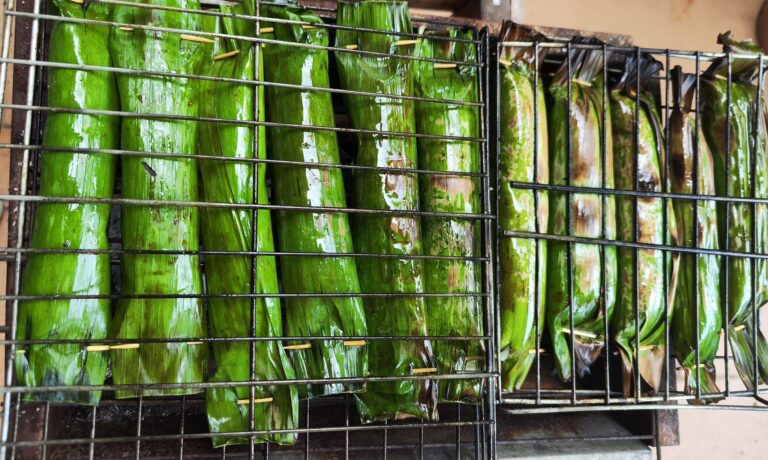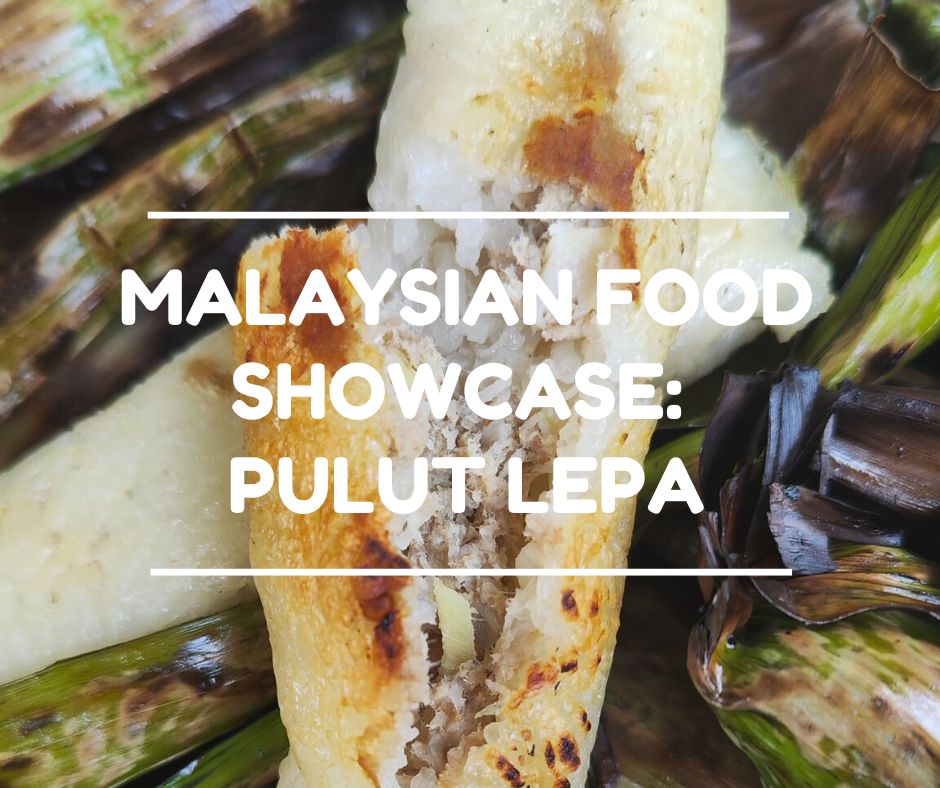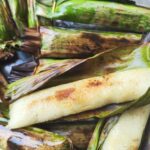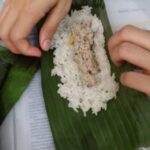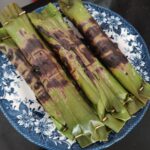Pulut Lepa: The Iconic Grilled Fish Parcel of Terengganu
Pulut Lepa (also called Pulut Lepe) is one of Terengganu’s most nostalgic traditional snacks, instantly recognizable by its slender banana leaf wrapping and smoky aroma. At first glance, it might be mistaken for Pulut Panggang, but don’t be fooled. This East Coast classic has its own personality, rooted in old-school traditions and coastal creativity.
It begins with beras pulut (glutinous rice) soaked for up to five hours before it’s steamed not once but twice. The first steaming softens the grains. The second round, after mixing with thick coconut milk and a bit of salt and sugar, gives it that creamy, “lemak” depth. Some old timers even toss in a pandan leaf or two for extra fragrance.
The real star, though, is the filling: a white sambal mixture made from flaked fish (usually selayang or kembung), finely sliced shallots, halba (fenugreek), ginger, and grated coconut. Everything is slowly cooked with santan, salt, and just a hint of palm sugar until the mixture is full of flavours and moist. The use of fenugreek, often soaked beforehand, is a signature Terengganu touch, adding a soft, nutty earthiness that lingers just beneath the surface.
Once the pulut is cooked and the sambal is ready, the rice is formed into cylinders and stuffed with the fish filling. Hands are often greased or rinsed in water to keep the sticky rice manageable, and there’s a cheeky tip some home cooks swear by: rubbing banana leaves with a bit of oil (or even a dab of alkaline lime paste or kapur) so nothing sticks.
Each parcel is usually wrapped in two layers of softened banana leaves and secured with bamboo skewers. Then comes the slow grilling. Pulut Lepa isn’t blasted over high flames; it’s gently toasted over low heat from glowing coals that give it its signature smokiness without burning the delicate wrapping. The result is a lightly charred skin, warm pulut inside, and that unmistakable smell of grilled banana leaf.
Pulut Lepa carries a story that’s over 100 years old. This wasn’t created as a fancy treat. It was made as survival food. Back in the day, it was the go-to meal for Terengganu’s fishermen, traders, and travelers. Easy to pack, energy-dense, and built to last a day or two without spoiling. With rice for carbs, fish for protein, and coconut for fat, it was the East Coast version of an energy bar wrapped in nature’s own packaging. Fittingly, the word “lepa” in Bahasa Malaysia means “to wrap,” a nod to the way this dish is carefully bundled in banana leaves before it’s grilled.
Today, Pulut Lepa continues to be loved, not just in kampungs but also by foodies and visitors alike. It often makes an appearance during Hari Raya as a substitute for ketupat, especially in Terengganu and some parts of Kelantan. It’s available in pasar pagi stalls, roadside food stalls, and night markets from Kuala Terengganu to Marang. And for those short on time, you can even find frozen versions at certain supermarkets. Just buy them, grill, steam, or pan-fry to enjoy the Pulut Lepa magic.
